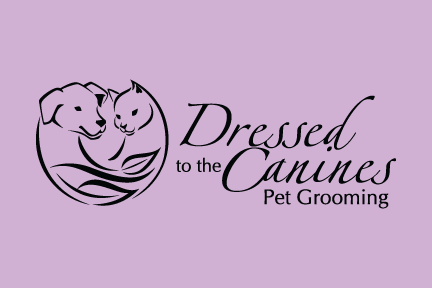Anyone who is lucky enough to know the love of a pet knows that it is inevitable that they don’t stay young forever.
Managing the needs of our Senior pets can be tricky & present a unique set of challenges.
Topics Covered;
Grooming for Comfort
Lumps & Bumps
Skin Conditions & Hair Loss
Arthritis
Dryer Fits
Grooming for Comfort
Once our beloved pets get to a certain point, their grooming needs switch from style, to comfort. Our salon motto is "‘Humanity Over Vanity’. This means we will always put the pets welfare first and the desired look second. We will not put a senior through a long, complicated haircut process if they are not physically capable of it. Just like humans, our senior pets get sore, arthritic, tire easily, go blind or deaf, have incontinence issues, start losing cognitive function & sometimes just want to be left alone.
Once your pet gets to this stage, we will discuss with you what is in the best interests of your pet grooming-wise. Often this will involve simplifying the groom to reduce time and/or doing a less-finessed finish to reduce movements of sore areas. Your pup may not look the prettiest but they will be as comfortable as possible.
There is no one-size-fits-all approach to this as each pet & their needs are individual. Below are some concerns that often affect senior pets.
Lumps & Bumps
Older pets are quite prone to lumps & bumps. These can range from malignant tumors, to benign cysts, to wart-like protrusions on the skin. These little warts are a very common in senior pets & are non-contagious, they are not warts but sebaceous tumors that are usually benign.
These little warts should be treated like moles; watch for bleeding/seeping & changing colour or size. It is always recommended to have your vet check them regularly for signs of changes.
When it comes to grooming, these warts can be little landmines. Although groomers will do their bet, it’s often hard to see them & is not uncommon to nick them unintentionally with a blade during clipping, especially if there is quite a few. If this does happen, the groomer will clean the area & inform you.
Skin Conditions & Hair Loss
Just like humans, hair thinning & balding is something that plagues seniors in all species. It is not uncommon for senior pets to have thinning areas, usually on the back or torso, or outright areas of baldness. This is fairly normal in older pets although can sometimes indicate underlying health concerns so regular health checks with the vet are important.
Just as the hair changes, so too does the skin in older pets. You’ve likely heard of “old people smell”, well there’s also ‘old dog smell’. As dogs get older, their skin pH levels change, sometimes leading to changes in smell & texture. The skin may feel dry or slightly tacky to the touch. Old dog smell does not mean your dog is dirty, it just means that they’re old & their body is changing.
Arthritis
Arthritis comes for us all eventually. Just like in humans, arthritis in pets is when the connective tissue breaks down in our joints until the bones are touching causing reduced mobility & pain.
Grooming is quite physical for pets & requires us to manipulate the limbs in order to to achieve an even finish & get into those hard to reach areas. When our pups stop moving like they used to, we don’t force them. We never want to cause any pet in our care pain so we work within their individual limits. As said above, this may mean the groom isn’t as pretty, but it was painless for your pup.
Dryer Fits
Dryer fits are probably one of the saddest things groomers deal with when working with senior pets. There is little known about the cause of dryer fits as it is unethical to induce them in order to study so all evidence is anecdotal. Dryer fits are when senior pets have a reaction similar to a panic attack or dementia attack while being blow dried. The best theories are it is something about the pitch of the dryer, the temperature change, the pressure of the dryer on the dogs skin or a combination of the three. There is some evidence to suggest these fits happen in dogs that have or are in the early stage of dementia.
It is usually characterized by the eyes glazing over, non-responsiveness, a panicked urge to flee, vocalizations and sometimes urination or defecation. Once the dryer is turned off & calming measures are taken, the dog will usually recover within minutes of the attack. However, it does take a toll on senior pets bodies. There is no rules as to when or if a dog will have a dryer fit other than once they start having them, they will keep having them each time they are blow dried.
Once we have a senior that has a dryer fit, we immediately change our approach to their grooms in order to prevent another one from happening.
